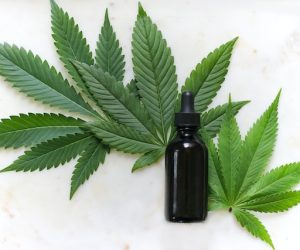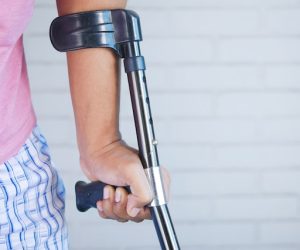
PRP therapy has gained a lot of traction in the last few years and is quickly becoming a popular treatment. The question is, what exactly does it treat? It’s one of those things you’ve probably heard mentioned before, yet you keep hearing it in different scenarios. One friend mentions it as a treatment for one thing, then another says they’re considering it for something else.
To help clear up any confusion, we’ll be tackling this trending topic today. You’ll find a list of the top uses of PRP therapy – but before we do that, a quick word on what this treatment is and how it works.
What Is PRP Therapy?
The eagle-eyed readers will know that PRP stands for platelet-rich plasma. Effectively, this is plasma taken from the bloodstream and concentrated over and over so it’s rich in platelets. Without getting too scientific, platelets are cells in our blood that play a key role in wound healing. To be slightly more specific, they bind together and form clots to stop or prevent bleeding. Plasma is another part of our blood that contains proteins to help cells grow.
PRP therapy involves injecting platelet-rich plasma into a specific area of the body. In theory, the combined benefits of the two concentrated substances mean the body is encouraged to speed up the wound-healing process and create new cells. As such, this can have huge benefits in many scenarios – which is why PRP therapy is so diverse.
If this sounds confusing, then don’t worry. PRP therapy becomes easier to understand when you look at the top uses of it.
The Most Popular Uses Of PRP Therapy
One of the most interesting things about PRP is that it’s used for a range of things. Some of these are purely medical while others take on more cosmetic tones. Indeed, it’s becoming more and more common to see cosmetic clinics introduce this therapy – more on that in a moment.
With all of this in mind, let’s look at some of the most popular uses of platelet-rich plasma injections:
Hair Growth
For years, scientists have tried to discover a cure for hair loss. Many ideas and techniques have been tried, including hair transplants. PRP therapy is one of the most impressive hair restoration ideas out there today. The science behind how it works means it’s perfect in this scenario. A lot of hair loss clinics are introducing PRP injections as a minimally invasive treatment for hair loss.
It’s believed that the platelet-rich plasma stimulates new cell growth in the scalp when injected. As a result, new hair cells kick into life and you can see new follicles start to grow and form. It’s already used as a common treatment for male or female-pattern baldness – as well as an accessory to other treatments.
For instance, some hair loss specialists use platelet-rich plasma injections to stimulate hair growth that can then be used for hair transplants. On the maintenance side of things, PRP can be used to encourage hair follicles to stay active, leading to fuller and thicker heads of hair. It is certainly a ground-breaking treatment and one of the first non-surgical hair growth methods that genuinely works.
Cosmetic Skin Rejuvenation
We mentioned that cosmetic beauty clinics are picking up PRP injections – and there’s a good reason for this. If you look at a lot of cosmetic procedures, most focus on rejuvenating the skin. Ideas like microneedling or microdermabrasion are specifically designed to encourage cell turnover. These methods involve causing tiny little damage to the skin, which forces blood to the area and triggers the natural healing process. As a result, the skin starts repairing itself with collagen, which can make it look smoother and younger.
This is where platelet-rich plasma treatments come into play. Injecting the skin with PRP – either on its own or after other treatments – will speed up the healing process. It floods the skin with more blood cells and protein to help build new skin cells that provide extra support to the skin’s structure.
Therefore, PRP is a key component in a lot of skin rejuvenation techniques. Think of it as an injection that gives the skin an extra boost to stimulate collagen production and improve healing. It allows your skin to look more youthful and much clearer, meaning it could be a key part of your skincare routine as you get older.
Funnily enough, there’s a term for PRP skincare treatments and boy is it a good one. If you’ve ever heard of a Vampire Facial, then it involves platelet-rich plasma injections. It gets the name because you’re using blood to stay youthful, which is pretty much exactly what a vampire does!
Scars & Hyperpigmentation Removal
While we’re talking about skincare, it makes sense to mention that platelet-rich plasma injections are also used to treat various imperfections. This can include acne scars, stretch marks, and hyperpigmentation.
Sometimes, things happen to your skin that result in permanent imperfections. Sometimes you’re okay with this, but other times it can make you feel self-conscious – particularly in the case of acne scars that permanently disfigure your skin. Platelet-rich plasma is often injected into the skin to help heal and remove these imperfections. It works similarly to a Vampire Facial, but the main goal is to make the skin look clearer.
Injury Treatment
You’ve seen the more cosmetic side of PRP, but it started off as a purely medical treatment. Doctors and medical professionals would use PRP injections to treat a range of injuries. Primarily, it would be used to tackle tendon injuries like tennis elbow or Achilles tendonitis.
These sorts of injuries are hard to treat because they flare up all the time and cause inflammation. When you inject platelet-rich plasma into the bloodstream at an injury site, it does some magnificent things. The growth factors and proteins in PRP stimulate blood flow and reduce inflammation in the area. This greatly reduces pain and swelling – but there’s more.
If you remember right in the beginning we said PRP therapy helps accelerate wound healing. Well, tendon injuries and other muscular injuries are basically wounds. They don’t cause bleeding, but PRP can still supercharge the recovery process. The wounds receive a higher concentration of platelets and plasma to help tendons knit back together or muscles to grow stronger.
Either way, this therapy is a proven way of treating lots of different injuries and helping recovery go a lot faster. In fact, it has now become a very common and popular injury treatment method for athletes because they need to recover much faster than normal individuals.
Surgery Recovery
Finally, platelet-rich plasma is sometimes used in the surgery recovery process. After conducting surgery, injections are made to help decrease the recovery time and enhance the effects of the surgical procedure.
Again, this is commonly done when dealing with sports injuries. If an athlete tears a muscle or ligament – and requires surgery – surgeons will use PRP injections to encourage better wound healing. It helps things grow back stronger and may prevent further injuries from happening in the future.
Overall, you can see why this is such a trending topic in the world of cosmetic beauty and healthcare! Granted, most of you will be interested in PRP from a cosmetic standpoint. If you’d like a new facial or want to help imperfections fade, it can be a truly viable treatment to consider. Likewise, if you’re struggling with hair loss and want to either regrow follicles or prevent more from falling out, it’s a brilliant option.



